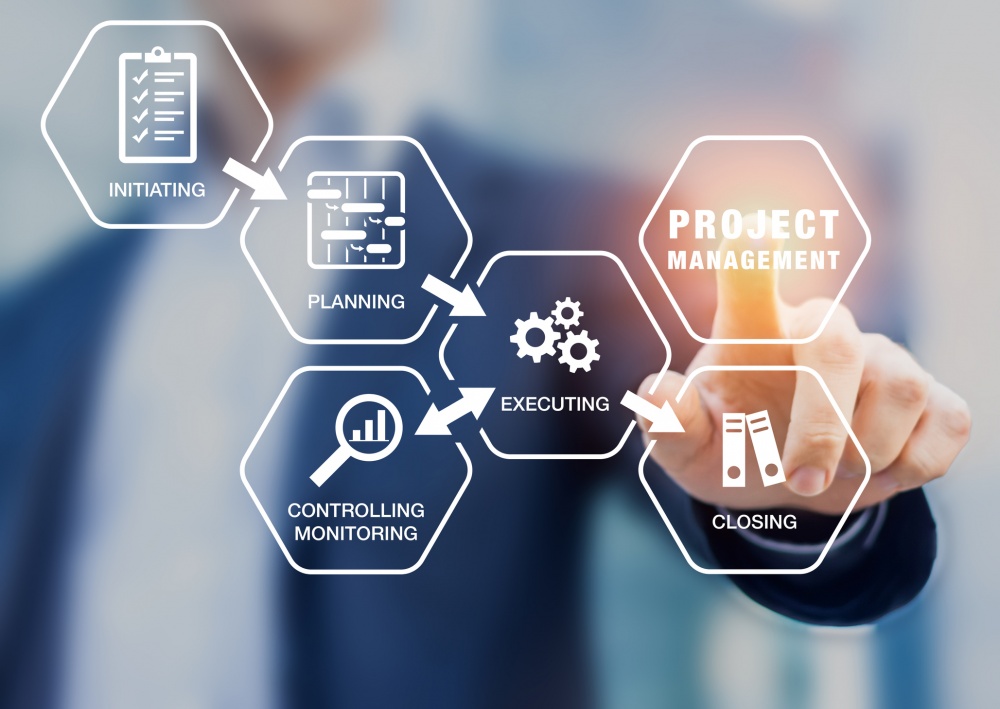How to Relate Traditional Project Management Techniques to Electronic Discovery Management

There is a lot of talk around project management across all industries. In fact, according to Quora.com, the US alone has approximately 290,000 people that hold the PMP® (Project Management Professional) certification. I am one of those individuals. When I was first introduced to the PMP curriculum I was not sure how it would complement my e-discovery skill set but I soon learned it provides a valuable set of tools that can be directly translated to the e-discovery industry.
According to eDiscoveryPM.com: “Project management is the structured application of skill, knowledge, tools and techniques to organize activities and bring about a desired outcome that meets a project or business need.” This is a pretty accurate description of what I do on a daily basis with respect to e-discovery – using my experience in litigation and e-discovery technology to manage data throughout its lifecycle so that case teams and clients can make use of it in litigation.
If you look at the five phases of a project as defined by PMP techniques, you will see that litigation, and specifically e-discovery, can fall within the parameters of these phases. Below I’ve provided ways to take advantage of PMP skills in the e-discovery context.
Initiation
This is a very important part of any litigation. It is when a lot of the fact gathering takes place and gives the case team the opportunity to determine what will be needed in the planning stage. This phase may take time and most likely will involve senior case team members and a time commitment from the client If done thoroughly, however, it pays off in the next phases of litigation.
- Develop a Business Case
- Determine what is at issue in the case and the inner workings of the client organization.
- Identify Scope
- Identify the potential exposure to the client and the timeframe in question.
- Identify Stakeholders
- Identify the key individuals at the client that will help build the case. This will not only be custodians or relevant data but also internal legal and IT resources.
Planning
It is tempting to skip this phase of litigation and focus on execution for the client but planning will pay off as the litigation progresses. Effective and detailed planning will ensure that there are enough resources to get the tasks done and will keep the budget on track.
- Create a workflow
- This is a classic time for the meet and confer and development of the ESI agreement. This is where the legal team and e-discovery team come together to develop a strategy and workflow for handling data. While the ESI agreement won’t lay out all of the specifics, it will provide a framework for the development of the workflow.
- Gather resources
- Determine who will be a part of the legal and e-discovery teams, what resources are available within the client’s infrastructure to assist with tasks, and whether there be a need for any external vendors.
- Estimate budget
- Prepare a detailed legal services budget that also includes e-discovery costs. Again, the details around collection, review and form of production will allow for a more detailed analysis of the estimated cost of the litigation.
Execution
This phase goes hand in hand with the Monitoring/Controlling phase and is the longest phase of any litigation. In this phase we are collecting data, reviewing data, producing data, taking depositions and engaging in motion practice.
- Assign Resources
- Determine what team member will be assigned to which task and the timeframe in which each task will need to be completed. Delineated tasks will help to move the work forward in a timely manner.
- Develop Documentation
- Documentation should be maintained from the outset of any litigation. Collection logs, custodian logs, production specifications, and production logs, to name a few. These logs are valuable as resources when there is a litigation change or as reference points if there is a delay in the timeline.
- Execute/Modify Plans
- As the litigation progresses, continue to execute the initial workflow, modifying as needed. The litigation process is a very fluid so there may be a need to modify the initial framework that was established at the beginning of the litigation.
Monitoring/Controlling
This phase continues during the whole Execution phase. The direction of a case can change rapidly so there needs to be monitoring of processes to make sure that there are no changes needed, and if changes are needed, they are executed efficiently and effectively. This continued monitoring and adjusting is what makes for a successfully managed litigation and a good client relationship.
- Brief team members
- Weekly or bi-weekly team meetings are important to bring all resources together and discuss any challenges or changes that may need to be made to the workflow. This also presents an opportunity to disseminate information and make sure that all team members are on the track with their various assignments.
- Monitor quality of work
- This should be done on all aspects of the case but is very important during the review and production phase of a project. There will need to be detailed monitoring of the responsive and privilege calls by reviewers and good quality checks from senior level e-discovery and case team members.
- Manage Budget
- Through this whole process the budget needs to be in the case team’s thoughts. The scope of the collection, review or production can change, leading to a dramatic increase in cost. When case teams are focusing on costs, they are able to develop and implement workflow changes or strategic decisions to ensure both legal and business considerations are met.
Closure
This phase is often skipped by case teams. The case has been resolved and the team members have moved on to other litigations. That should not be the case. This is where the case team learns what changes should be made internally to various processes. It is also a great opportunity to help the client learn about their internal workings and how they can better position themselves for future litigation. Effective case closure can also lead to additional work assisting the client with their Information Governance and Litigation Readiness plans.
- Analyze project and team results
- Review the project and determine what pieces of the process worked well and which pieces need refinement. Should the team have had more frequent meetings, should forensic analysis have been done, would the use of analytics have been helpful.? All of these ideas will lead to a more streamlined approach to the next litigation.
- Document project closure
- Do a case write up. Although this case is complete, there may be a need in the future for some of the data that was used in this matter or a decision that was made may need to be referenced. It is always good to have that documentation.
- Assess the final budget
- Was the initial budget assessment close to the final? What caused the budget to creep and if so how could it have been avoided? This analysis will help during the planning phase on future litigations when estimating budget.
As you can see, applying the fundamental framework used by Project Management Professionals can be very valuable to the successful management of any litigation process. In fact, it lends itself very well to the phases of the Electronic Discovery Reference Model (EDRM).

DISCLAIMER: The information contained in this blog is not intended as legal advice or as an opinion on specific facts. For more information about these issues, please contact the author(s) of this blog or your existing LitSmart contact. The invitation to contact the author is not to be construed as a solicitation for legal work. Any new attorney/client relationship will be confirmed in writing

